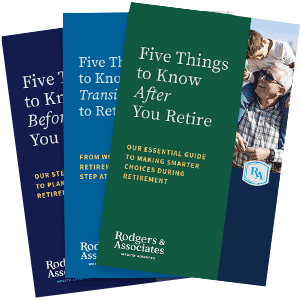As of 2025, the baby boomer generation is between 61 and 79 years old, meaning more and more individuals are thinking about where they want to spend their golden years. While some people decide to age in place, others consider moving to Continuing Care Retirement Communities (CCRCs), which continue to expand and evolve the care they offer.
Some CCRCs charge hefty entrance fees (six figures can be common) which leaves residents wondering whether the fee is tax deductible. To get a clear answer, it’s important to ask the right questions when interviewing a CCRC and to collaborate with your tax adviser to make the best decision possible.
For starters, it helps to understand the three main types of CCRC contracts:
- Type A is called a “life care contract.” These contracts offer increasing levels of medical care at the same monthly fee, excluding the cost of inflation.
- Type B “modified contracts” offer some period of free medical care, often 60 to 90 days. After this period, the resident must pay higher monthly fees based on the level of care they require.
- Type C “pay as you go contracts” offer no advance medical care as part of their monthly fees, so residents pay for these services as they use them.
Now, we’ll look at how deductions come into play.
Type A contracts are the only independent living contracts that are eligible for medical deductions.
As for entrance fees, the tax court has made it clear that any refundable portion of an entrance fee is not tax deductible. (The IRS views these as below-market interest rate loans.) In plans where 90% of the entrance fee is refundable, the remaining 10% (or founders fee) is often deductible as an advance medical payment.
When it comes to contracts, the phrase “distinctly non-refundable fees” indicates that a tax deduction might apply. For Type B contracts, the free days are tax deductible and a portion of the entrance fee. For Type C, only a portion of the entrance fee is tax deductible. The deductible portion is determined by the percentage of annual operating costs used for medical care in that community. For entrance fees where a declining percentage is refunded over time, residents need to report the refund as income if they previously deducted the entrance fee.
To be sure you know how your entrance fee impacts your tax return, seek advice from both the CCRC and your tax adviser. If you’re eligible for the CCRC entry fee deduction, be aware that it is only available in the year you pay the fee. The deduction can’t be spread out over several years. The monthly fee deduction, however, may be allowed every year. (Generally, if you’re eligible for a tax deduction on the entrance fee, you’re likely eligible for an ongoing deduction on the monthly fee as well.)
If your tax adviser isn’t familiar with these types of deductions, they can refer to IRS Publication 502, which covers these expenses along with the nuances of including part of a monthly (or lump-sum) life care fee in your medical expenses when itemizing deductions (Schedule A of Form 1040).
Keep in mind that the details of your medical, living, and financial circumstances are unique, and tax laws are complex. So, always keep accurate records and consult with a certified tax professional who can tailor recommendations to your situation.
Originally Posted: June 2, 2015



